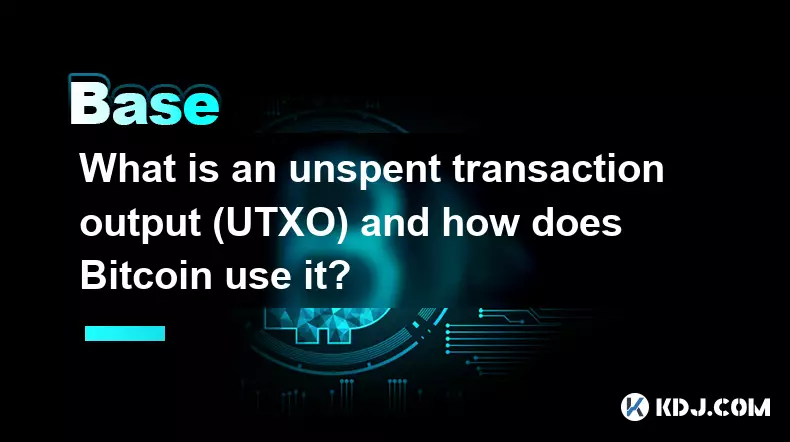-
 bitcoin
bitcoin $99296.318777 USD
-2.82% -
 ethereum
ethereum $3203.465899 USD
-6.84% -
 tether
tether $0.999590 USD
-0.03% -
 xrp
xrp $2.308913 USD
-4.00% -
 bnb
bnb $922.788929 USD
-3.53% -
 solana
solana $144.020807 USD
-5.89% -
 usd-coin
usd-coin $0.999798 USD
0.00% -
 tron
tron $0.291590 USD
-1.12% -
 dogecoin
dogecoin $0.163780 USD
-4.46% -
 cardano
cardano $0.526919 USD
-4.40% -
 hyperliquid
hyperliquid $37.888865 USD
-2.24% -
 bitcoin-cash
bitcoin-cash $510.515457 USD
-1.08% -
 chainlink
chainlink $14.436987 USD
-5.63% -
 stellar
stellar $0.267345 USD
-4.77% -
 unus-sed-leo
unus-sed-leo $9.175222 USD
0.53%
What is a sidechain and how is it different from a Layer 2 network?
Sidechains operate independently with their own security, while Layer 2 solutions scale the main chain by inheriting its security through trustless mechanisms.
Nov 14, 2025 at 02:59 pm

Understanding Sidechains in the Blockchain Ecosystem
1. A sidechain is an independent blockchain that runs parallel to the main blockchain, often referred to as the mainnet. It operates under its own consensus mechanism and block parameters, allowing developers to experiment with new features without affecting the stability of the primary chain.
2. Transactions on a sidechain are processed separately from the main chain. Users can transfer assets from the mainnet to the sidechain through a two-way peg, enabling interoperability between the chains while maintaining distinct transaction ledgers.
3. Sidechains require their own security model, which may rely on a smaller set of validators or miners compared to the main chain, potentially making them more vulnerable to attacks if not properly secured.
4. They are often used for specialized applications such as gaming, enterprise solutions, or testing environments where high throughput or custom logic is needed without burdening the main network.
5. Examples include the Liquid Network, which is a Bitcoin sidechain focused on faster settlements for exchanges, and Polygon POS Chain, which, despite common misconceptions, functions as a sidechain due to its independent validation process.
Exploring Layer 2 Networks and Their Role
1. Layer 2 networks are built on top of an existing blockchain (Layer 1) to enhance scalability and reduce congestion by processing transactions off the main chain while still deriving security from it.
2. These networks bundle multiple transactions into a single batch and post them back to the main chain, significantly lowering gas fees and increasing transaction speed.
3. Unlike sidechains, Layer 2 solutions inherit the security of the underlying Layer 1 blockchain, making them less prone to centralization risks and external attacks.
4. Common types of Layer 2 technologies include state channels, like those used in the Lightning Network for Bitcoin, and rollups—such as Optimistic Rollups and ZK-Rollups—which are widely adopted on Ethereum.
5. Because they are tightly coupled with the main chain’s consensus, Layer 2 networks ensure finality and dispute resolution through smart contracts deployed on Layer 1, reinforcing trust and decentralization.
Key Differences Between Sidechains and Layer 2 Solutions
1. Security architecture differs fundamentally: sidechains maintain independent security models, whereas Layer 2 networks leverage the cryptographic security of the base layer.
2. The level of decentralization varies; many sidechains use federated or proof-of-authority consensus mechanisms, which can introduce central points of failure, while Layer 2 systems typically operate in a decentralized manner anchored to the mainnet.
3. Asset bridging methods differ—sidechains often require trust in a bridge operator or federation, while Layer 2 solutions use trustless mechanisms such as fraud proofs or validity proofs to guarantee asset integrity.
4. Development flexibility is higher on sidechains since they allow changes to core protocol rules, but this comes at the cost of reduced security guarantees compared to the constrained yet secure environment of Layer 2.
5. User experience may vary depending on the solution; Layer 2 networks aim for near-native integration with wallets and dApps, minimizing friction during interaction, while sidechains might require specific configurations or dedicated tools.
Frequently Asked Questions
Can a sidechain become a Layer 2 solution?No, a sidechain cannot become a Layer 2 solution because the fundamental distinction lies in how they achieve security. A sidechain relies on its own validators, while a Layer 2 must derive its security directly from the main chain through cryptographic proofs.
Do all Layer 2 networks use rollup technology?Not all Layer 2 networks use rollups. While rollups are currently dominant on Ethereum, other Layer 2 approaches include state channels and plasma chains. Each uses different techniques to scale transaction capacity without compromising mainnet security.
Is transferring funds to a sidechain riskier than using a Layer 2?Yes, transferring funds to a sidechain can be riskier due to reliance on separate consensus mechanisms and centralized bridge operators. In contrast, Layer 2 networks use verifiable, trust-minimized protocols that reduce counterparty and operational risks.
Why do some projects label their sidechains as Layer 2?Some projects market their sidechains as Layer 2 solutions to benefit from the positive perception associated with Ethereum's scaling narrative. However, technically, unless they inherit mainnet security through cryptographic proofs, they remain sidechains.
Disclaimer:info@kdj.com
The information provided is not trading advice. kdj.com does not assume any responsibility for any investments made based on the information provided in this article. Cryptocurrencies are highly volatile and it is highly recommended that you invest with caution after thorough research!
If you believe that the content used on this website infringes your copyright, please contact us immediately (info@kdj.com) and we will delete it promptly.
- Crypto Carnage: Navigating Selling and Liquidations in a Wild Market
- 2025-11-14 16:50:01
- Mohammed Siraj's First Spell Woes: An India Teammate's Critique
- 2025-11-14 14:40:02
- BTC, ETH, and Altcoin Picks: Navigating the Crypto Landscape
- 2025-11-14 14:50:01
- Coin Toss Tales: Temba Bavuma's Wager and India vs. SA Showdown
- 2025-11-14 12:50:01
- Shubman Gill, WTC Final, and the Coin Toss: A New Yorker's Take
- 2025-11-14 15:05:01
- Aerodrome Takes Flight: Unifying Ethereum DeFi Liquidity Across Chains
- 2025-11-14 15:10:02
Related knowledge

What is the difference between a transparent and a shielded transaction?
Nov 10,2025 at 05:59pm
Understanding Transparent Transactions in Cryptocurrency1. Transparent transactions are the standard form of transaction on most public blockchains li...

What is a "crypto airdrop farmer" and what strategies do they use?
Nov 09,2025 at 03:39pm
What Is a Crypto Airdrop Farmer?1. A crypto airdrop farmer is an individual who actively participates in blockchain projects to qualify for free token...

What is an unspent transaction output (UTXO) and how does Bitcoin use it?
Nov 12,2025 at 01:40am
Understanding the Concept of Unspent Transaction Output (UTXO)1. An Unspent Transaction Output, commonly referred to as UTXO, is a fundamental compone...

What is a "governance attack" and how can a DAO be compromised?
Nov 14,2025 at 05:59am
Understanding Governance Attacks in Decentralized Autonomous Organizations1. A governance attack occurs when an individual or group gains disproportio...

How do you track a crypto portfolio across multiple wallets and chains?
Nov 12,2025 at 04:19pm
The Evolution of Decentralized Exchanges in the Crypto Ecosystem1. Decentralized exchanges (DEXs) have transformed how users trade digital assets by r...

How does a crypto insurance protocol work?
Nov 08,2025 at 12:39am
Understanding Crypto Insurance Protocols1. A crypto insurance protocol operates by offering financial protection against losses incurred from digital ...

What is the difference between a transparent and a shielded transaction?
Nov 10,2025 at 05:59pm
Understanding Transparent Transactions in Cryptocurrency1. Transparent transactions are the standard form of transaction on most public blockchains li...

What is a "crypto airdrop farmer" and what strategies do they use?
Nov 09,2025 at 03:39pm
What Is a Crypto Airdrop Farmer?1. A crypto airdrop farmer is an individual who actively participates in blockchain projects to qualify for free token...

What is an unspent transaction output (UTXO) and how does Bitcoin use it?
Nov 12,2025 at 01:40am
Understanding the Concept of Unspent Transaction Output (UTXO)1. An Unspent Transaction Output, commonly referred to as UTXO, is a fundamental compone...

What is a "governance attack" and how can a DAO be compromised?
Nov 14,2025 at 05:59am
Understanding Governance Attacks in Decentralized Autonomous Organizations1. A governance attack occurs when an individual or group gains disproportio...

How do you track a crypto portfolio across multiple wallets and chains?
Nov 12,2025 at 04:19pm
The Evolution of Decentralized Exchanges in the Crypto Ecosystem1. Decentralized exchanges (DEXs) have transformed how users trade digital assets by r...

How does a crypto insurance protocol work?
Nov 08,2025 at 12:39am
Understanding Crypto Insurance Protocols1. A crypto insurance protocol operates by offering financial protection against losses incurred from digital ...
See all articles










































































